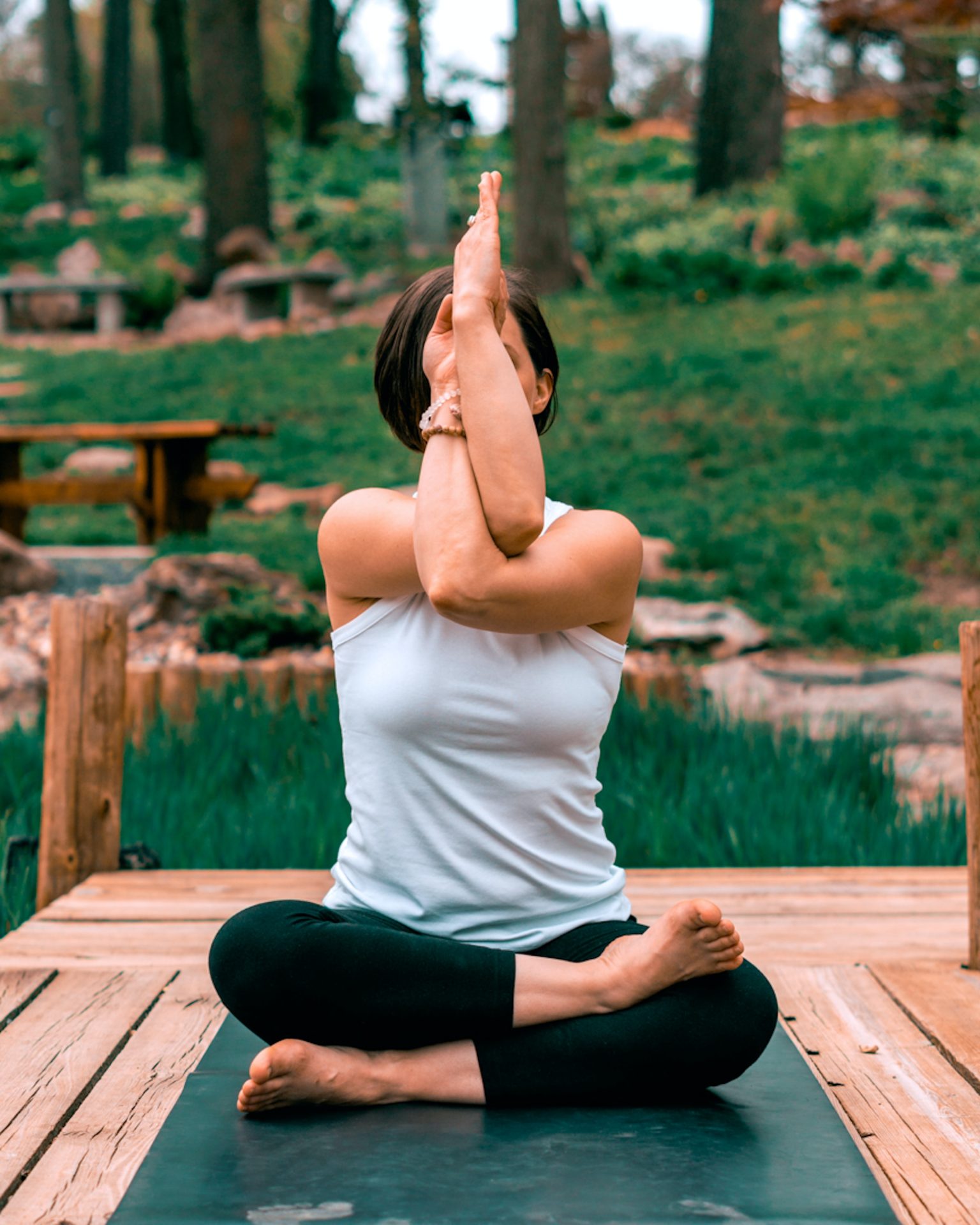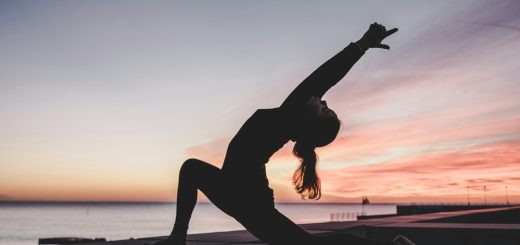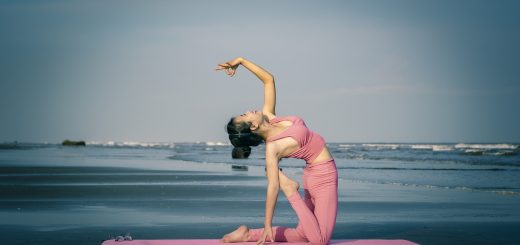What Are Yoga Poses Called? Learn The Basics

Before diving in, please note: This post is for informational purposes only. If you’d like to know more about how we approach topics, feel free to check out our friendly Disclaimer Page.
Hey there, amazing readers! 🖐️ Just a quick note: yes, we know there are a lot of ads here. Trust us, we get it—it’s not the prettiest look, but they help us keep this blog alive and kicking. Those pesky little ads cover the costs of all the behind-the-scenes magic, from hosting and tech stuff to creating content we hope you’ll love.
We’re committed to delivering quality posts, and your support (even just sticking around despite the ads) means everything to us. So, bear with us, and thanks for helping us keep the good vibes rolling. Now, on to the fun stuff! 😉
TRANSLATE BUTTON AT THE END OF THE ARTICLE
Introduction: Understanding Yoga Poses
Yoga is a practice that encompasses physical postures, breathing techniques, and meditation to promote overall health and well-being.
One of the essential aspects of yoga is the various poses, or asanas, that practitioners perform during their practice.
These poses are designed to stretch, strengthen, and balance the body while also calming the mind.
Understanding yoga poses is crucial for any practitioner, whether you are a beginner or have been practicing for years.
Each pose serves a specific purpose and offers unique benefits to the body and mind.
By learning the basics of yoga poses, you can improve your flexibility, strength, and focus while also finding a sense of inner peace and relaxation.
In this article, we will explore the different categories of yoga poses, from standing poses to inversions, and discuss their benefits.
Whether you are new to yoga or looking to deepen your practice, understanding these poses will help you navigate your yoga journey with confidence and ease.
The Importance of Learning Yoga Poses
Learning yoga poses is essential for developing a well-rounded practice that addresses both the physical and mental aspects of yoga.
Each pose has its own set of benefits, from improving flexibility and strength to calming the nervous system and reducing stress.
By incorporating a variety of poses into your practice, you can target different areas of the body and work towards achieving balance and harmony.
Additionally, mastering yoga poses helps improve body awareness and alignment, which is crucial for preventing injuries and maintaining proper posture.
By paying attention to how your body moves in each pose, you can develop a deeper understanding of your strengths and limitations, allowing you to practice safely and effectively.
Moreover, learning yoga poses can also help you cultivate mindfulness and presence.
By focusing on your breath and body in each pose, you can quiet the mind and be fully present in the moment.
This mindfulness practice can have a profound impact on your overall well-being, helping you reduce stress, increase concentration, and find inner peace.
Basic Yoga Poses for Beginners
For beginners, starting with a few basic yoga poses is a great way to build strength, flexibility, and confidence in your practice.
These foundational poses are accessible to practitioners of all levels and can serve as a solid base for more advanced poses down the line.
Here are some basic yoga poses that are perfect for beginners:
Mountain Pose (Tadasana): This simple standing pose is all about grounding and centering yourself.
Stand tall with your feet hip-width apart, arms relaxed by your sides, and gaze forward.
Mountain Pose helps improve posture and focus.
Child’s Pose (Balasana): A resting pose that gently stretches the back, hips, and thighs.
Kneel on the floor, sit back on your heels, and then fold forward, reaching your arms out in front of you.
Child’s Pose is perfect for calming the mind and relieving stress.
Cat-Cow Pose (Marjaryasana-Bitilasana): This gentle flow between two poses helps warm up the spine and improve flexibility.
Start on your hands and knees, arch your back like a cat on the inhale (Cat Pose), and then drop the belly and lift the head on the exhale (Cow Pose).
Cat-Cow Pose is great for spinal health and mobility.
By incorporating these basic yoga poses into your practice, you can lay a strong foundation for your yoga journey and gradually progress to more advanced poses as you build strength and flexibility.
Standing Yoga Poses Explained
Standing yoga poses are an essential part of any yoga practice as they help build strength, improve balance, and cultivate stability both physically and mentally.
These poses are performed while standing upright and often require engagement of the legs, core, and upper body to maintain proper alignment.
Standing poses also help ground the practitioner, connecting them to the earth and promoting a sense of stability and rootedness.
Some common standing yoga poses include:
Warrior I (Virabhadrasana I): This pose strengthens the legs, opens the hips, and stretches the arms and chest.
Begin in a lunge position with one leg forward and the other back, arms reaching overhead.
Warrior I builds confidence and focus.
Tree Pose (Vrksasana): A balancing pose that strengthens the legs and core while improving focus and concentration.
Stand on one leg, place the sole of the other foot on the inner thigh or calf, and bring your hands to heart center.
Tree Pose promotes poise and stability.
Trikonasana (Triangle Pose): This pose stretches the sides of the body, opens the hips, and strengthens the legs.
Stand with your feet wide apart, reach one hand towards the floor and the other towards the ceiling, keeping your chest open.
Triangle Pose improves balance and flexibility.
By incorporating standing yoga poses into your practice, you can improve your posture, build strength in the lower body, and enhance your overall sense of stability and grounding.
Seated Yoga Poses and Their Benefits
Seated yoga poses are an integral part of a well-rounded yoga practice as they help stretch the hips, lower back, and hamstrings while promoting relaxation and introspection.
These poses are usually performed in a seated position on the mat and can be modified to accommodate practitioners of all levels and abilities.
Seated poses are excellent for increasing flexibility, calming the mind, and relieving tension in the body.
Some common seated yoga poses and their benefits include:
Seated Forward Bend (Paschimottanasana): This pose stretches the entire back of the body, including the spine, hamstrings, and shoulders.
Sit with your legs extended in front of you, hinge at the hips, and fold forward.
Seated Forward Bend promotes relaxation and releases tension in the back.
Bound Angle Pose (Baddha Konasana): A hip-opening pose that stretches the inner thighs and groins while improving posture and alignment.
Sit with the soles of your feet together and knees apart, fold forward from the hips, and lengthen the spine.
Bound Angle Pose enhances flexibility and mobility in the hips.
Easy Pose (Sukhasana): A comfortable seated position that promotes relaxation and meditation.
Sit cross-legged on the mat, align your spine, and rest your hands on your knees.
Easy Pose helps calm the mind, improve posture, and cultivate mindfulness.
Incorporating seated yoga poses into your practice can help release tension in the hips and lower back, improve flexibility, and create a sense of inner peace and relaxation.
Balancing Yoga Poses for Strength and Focus
Balancing yoga poses are a challenging yet rewarding aspect of yoga practice that help build strength, stability, and focus.
These poses require concentration, core engagement, and coordination to maintain balance while also developing mental resilience and determination.
Balancing poses can be both physically and mentally stimulating, encouraging practitioners to stay present and focused in the moment.
Some popular balancing yoga poses include:
Tree Pose (Vrksasana): A classic balancing pose that strengthens the legs, core, and ankles while improving focus and concentration.
Stand on one leg with the sole of the other foot pressing into the inner thigh or calf, and bring your hands to heart center.
Tree Pose promotes stability and mindfulness.
Eagle Pose (Garudasana): This pose challenges balance and coordination while stretching the shoulders, upper back, and outer thighs.
Cross one leg over the other, wrap the arms around each other, and sink into a seated position.
Eagle Pose builds strength in the legs and arms while enhancing focus and mental clarity.
Dancer’s Pose (Natarajasana): A graceful pose that requires strength, flexibility, and balance.
Stand on one leg, reach back to grasp the foot or ankle, and extend the other arm forward.
Dancer’s Pose opens the chest and shoulders, strengthens the legs, and improves balance and poise.
By practicing balancing yoga poses regularly, you can improve your overall strength, stability, and focus while also cultivating mindfulness and mental resilience.
Forward Bending Yoga Poses for Flexibility
Forward bending yoga poses are excellent for stretching the hamstrings, lower back, and spine while promoting relaxation and releasing tension in the body.
These poses help lengthen the muscles along the back of the body, increase flexibility in the spine, and calm the nervous system.
Forward bends are beneficial for relieving stress, improving digestion, and promoting a sense of ease and surrender.
Some common forward bending yoga poses include:
Seated Forward Bend (Paschimottanasana): This pose stretches the entire back of the body, including the spine, hamstrings, and shoulders.
Sit with your legs extended in front of you, hinge at the hips, and fold forward.
Seated Forward Bend promotes relaxation and releases tension in the back.
Standing Forward Bend (Uttanasana): A standing pose that stretches the hamstrings, calves, and spine while also calming the mind.
Stand with your feet hip-width apart, hinge at the hips, and fold forward, bringing your hands towards the floor or shins.
Standing Forward Bend helps relieve stress and tension in the body.
Wide-Legged Forward Bend (Prasarita Padottanasana): This pose stretches the inner thighs, hamstrings, and spine while strengthening the legs and core.
Stand with your feet wide apart, hinge at the hips, and fold forward, bringing your hands to the floor or a block.
Wide-Legged Forward Bend improves flexibility and releases tension in the back and legs.
Incorporating forward bending yoga poses into your practice can help increase flexibility in the spine and hamstrings, relieve tension in the back, and promote a sense of relaxation and surrender.
Backbends: The Heart-Opening Yoga Poses
Backbends, also known as heart-opening poses, are an essential part of a well-rounded yoga practice as they help counteract the effects of sitting and forward bending by stretching the front body and opening the heart center.
These poses strengthen the back muscles, improve posture, and cultivate courage and vulnerability.
Backbends can be energizing and invigorating, helping practitioners tap into their emotional and physical strength.
Some popular backbends in yoga include:
Cobra Pose (Bhujangasana): A gentle backbend that strengthens the spine, opens the chest, and stretches the shoulders and abdominals.
Lie on your stomach, place your hands under your shoulders, and lift your chest off the mat.
Cobra Pose improves posture and relieves tension in the back.
Bridge Pose (Setu Bandhasana): This pose strengthens the back, glutes, and hamstrings while opening the chest and shoulders.
Lie on your back, bend your knees, and lift your hips towards the ceiling, pressing into your feet and arms.
Bridge Pose improves spinal flexibility and strengthens the posterior chain.
Wheel Pose (Urdhva Dhanurasana): A more advanced backbend that requires strength, flexibility, and courage.
Lie on your back, bend your knees, place your hands by your ears, and press into your palms to lift your chest towards the ceiling.
Wheel Pose opens the heart center, strengthens the back and shoulders, and improves overall flexibility.
By incorporating backbends into your practice, you can counteract the effects of forward bending, improve posture, strengthen the back muscles, and cultivate courage and vulnerability on and off the mat.
Twisting Yoga Poses for Detoxification
Twisting yoga poses are beneficial for detoxifying the body, improving digestion, and increasing spinal mobility.
These poses help wring out toxins from the organs, stimulate the digestive system, and release tension in the spine and back muscles.
Twists also have a calming effect on the nervous system, promoting relaxation and reducing stress.
Incorporating twisting poses into your practice can help cleanse the body from the inside out and promote overall well-being.
Some common twisting yoga poses and their benefits include:
Seated Spinal Twist (Ardha Matsyendrasana): This pose stretches the spine, shoulders, and hips while stimulating the digestive organs and detoxifying the body.
Sit with one leg extended and the other foot crossed over the opposite knee, twist towards the bent knee, and place your hand on the floor or thigh.
Seated Spinal Twist improves spinal mobility and aids digestion.
Revolved Chair Pose (Parivrtta Utkatasana): A standing twist that strengthens the legs, core, and back while detoxifying the body and improving balance.
Begin in Chair Pose, twist the torso to one side, and bring your hands to heart center.
Revolved Chair Pose stimulates the organs, improves digestion, and enhances balance and stability.
Revolved Triangle Pose (Parivrtta Trikonasana): This pose stretches the hamstrings, spine, and shoulders while detoxifying the body and promoting spinal mobility.
Stand with your feet wide apart, hinge at the hips, and twist the torso towards one leg, reaching the opposite hand towards the floor or a block.
Revolved Triangle Pose cleanses the body, improves flexibility, and stimulates the digestive system.
Incorporating twisting yoga poses into your practice can help detoxify the body, improve digestion, increase spinal mobility, and promote relaxation and well-being.
Inversions: Upside-Down Yoga Poses
Inversions are yoga poses where the head is below the heart, and the body is inverted, either partially or completely.
These poses offer a unique perspective on the world and have a wide range of physical and mental benefits.
Inversions help reverse the effects of gravity on the body, improve circulation, and stimulate the lymphatic system.
These poses also challenge balance, strength, and focus, encouraging practitioners to step out of their comfort zone and explore new possibilities.
Some common inversions in yoga include:
Headstand (Sirsasana): A classic inversion that strengthens the upper body, core, and shoulders while improving focus and concentration.
Begin on your hands and knees, place the crown of your head on the mat, and lift your legs towards the ceiling.
Headstand improves circulation, builds upper body strength, and cultivates mental clarity.
Shoulder Stand (Sarvangasana): This inversion stimulates the thyroid gland, improves digestion, and relieves stress and fatigue.
Lie on your back, lift your legs towards the ceiling, and support your lower back with your hands, elbows on the mat.
Shoulder Stand increases circulation, promotes relaxation, and enhances overall well-being.
Handstand (Adho Mukha Vrksasana): A challenging inversion that requires strength, balance, and courage.
Begin in Downward-Facing Dog, walk your feet towards your hands, kick up into a handstand against a wall or in the middle of the room.
Handstand builds upper body strength, improves balance, and cultivates mental resilience and determination.
By practicing inversions regularly, you can improve circulation, stimulate the lymphatic system, build upper body strength, and cultivate focus, balance, and mental clarity.
Restorative Yoga Poses for Relaxation
Restorative yoga poses are designed to promote deep relaxation, relieve stress, and restore the body and mind.
These poses are typically held for longer periods, allowing the body to fully relax and release tension while promoting a sense of calm and tranquility.
Restorative poses are excellent for reducing anxiety, improving sleep, and rejuvenating the body after a long day.
Incorporating restorative yoga poses into your practice can help balance the nervous system, reduce stress, and promote overall well-being.
Some common restorative yoga poses and their benefits include:
Corpse Pose (Savasana): A relaxation pose that allows the body to rest and rejuvenate.
Lie on your back with your arms by your sides, legs extended, and eyes closed.
Corpse Pose promotes deep relaxation, reduces stress, and calms the mind.
Supported Child’s Pose (Balasana): A restful pose that stretches the back, hips, and shoulders while promoting relaxation and surrender.
Kneel on the mat, sit back on your heels, and place a bolster or pillow under your chest, folding forward.
Supported Child’s Pose releases tension in the back and shoulders, calms the nervous system, and promotes a sense of inner peace.
Legs-Up-The-Wall Pose (Viparita Karani): This gentle inversion allows blood flow to move towards the heart and promotes relaxation and restoration.
Lie on your back with your legs extended up the wall, arms by your sides, and eyes closed.
Legs-Up-The-Wall Pose reduces swelling in the legs, calms the mind, and relieves tension in the lower back.
Incorporating restorative yoga poses into your practice can help reduce stress, promote relaxation, and rejuvenate the body and mind, allowing you to find a sense of peace and tranquility.
Conclusion: Incorporating Yoga Poses into Your Practice
Incorporating a variety of yoga poses into your practice can offer numerous benefits for your body and mind.
Whether you are focusing on building strength, increasing flexibility, improving balance, or cultivating relaxation, exploring different types of poses will enhance your overall well-being and deepen your yoga journey.
Here are some key points to consider when incorporating yoga poses into your practice:
1.
Listen to Your Body: Always pay attention to your body’s signals and limits.
Practice poses mindfully and modify them as needed to suit your unique body and abilities.
2.
Warm Up Properly: Begin your practice with gentle movements and stretches to warm up your body and prepare it for more challenging poses.
3.
Use Props: Props such as blocks, straps, and bolsters can help you achieve proper alignment and support in poses, making them more accessible and comfortable.
4.
Practice Consistently: Regular practice allows you to gradually build strength, flexibility, and confidence in your yoga journey.
5.
Seek Guidance: If you’re new to yoga or exploring new poses, consider working with a qualified instructor who can provide guidance and support.
6.
Balance Your Practice: Include a mix of different types of poses—such as standing, seated, balancing, and restorative poses—to achieve a well-rounded practice.
7.
Focus on Breathing: Deep, mindful breathing is essential in yoga.
It helps calm the mind, enhance relaxation, and improve your overall experience in each pose.
8.
Take Time to Rest: Incorporate restorative poses and meditation to allow your body and mind to rest and recharge, especially after more intense practices.
By exploring and incorporating a variety of yoga poses into your practice, you can experience a holistic approach to health and wellness that encompasses the physical, mental, and emotional aspects of your being.
Yoga is a journey of self-discovery, and by embracing different poses, you can deepen your connection with yourself and find greater balance and harmony in your life.

The Enlightenment Journey is a remarkable collection of writings authored by a distinguished group of experts in the fields of spirituality, new age, and esoteric knowledge.
This anthology features a diverse assembly of well-experienced authors who bring their profound insights and credible perspectives to the forefront.
Each contributor possesses a wealth of knowledge and wisdom, making them authorities in their respective domains.
Together, they offer readers a transformative journey into the realms of spiritual growth, self-discovery, and esoteric enlightenment.
The Enlightenment Journey is a testament to the collective expertise of these luminaries, providing readers with a rich tapestry of ideas and information to illuminate their spiritual path.
Our Diverse Expertise 🌟
While our primary focus is on spirituality and esotericism, we are equally passionate about exploring a wide range of other topics and niches 🌍📚. Our experienced team is dedicated to delivering high-quality, informative content across various subjects ✨.
To ensure we provide the most accurate and valuable insights, we collaborate with trusted experts in their respective domains 🧑🏫👩🏫. This allows us to offer well-rounded perspectives and knowledge to our readers.
Our blog originally focused on spirituality and metaphysics, but we’ve since expanded to cover a wide range of niches. Don’t worry—we continue to publish a lot of articles on spirituality! Frequently visit our blog to explore our diverse content and stay tuned for more insightful reads.






